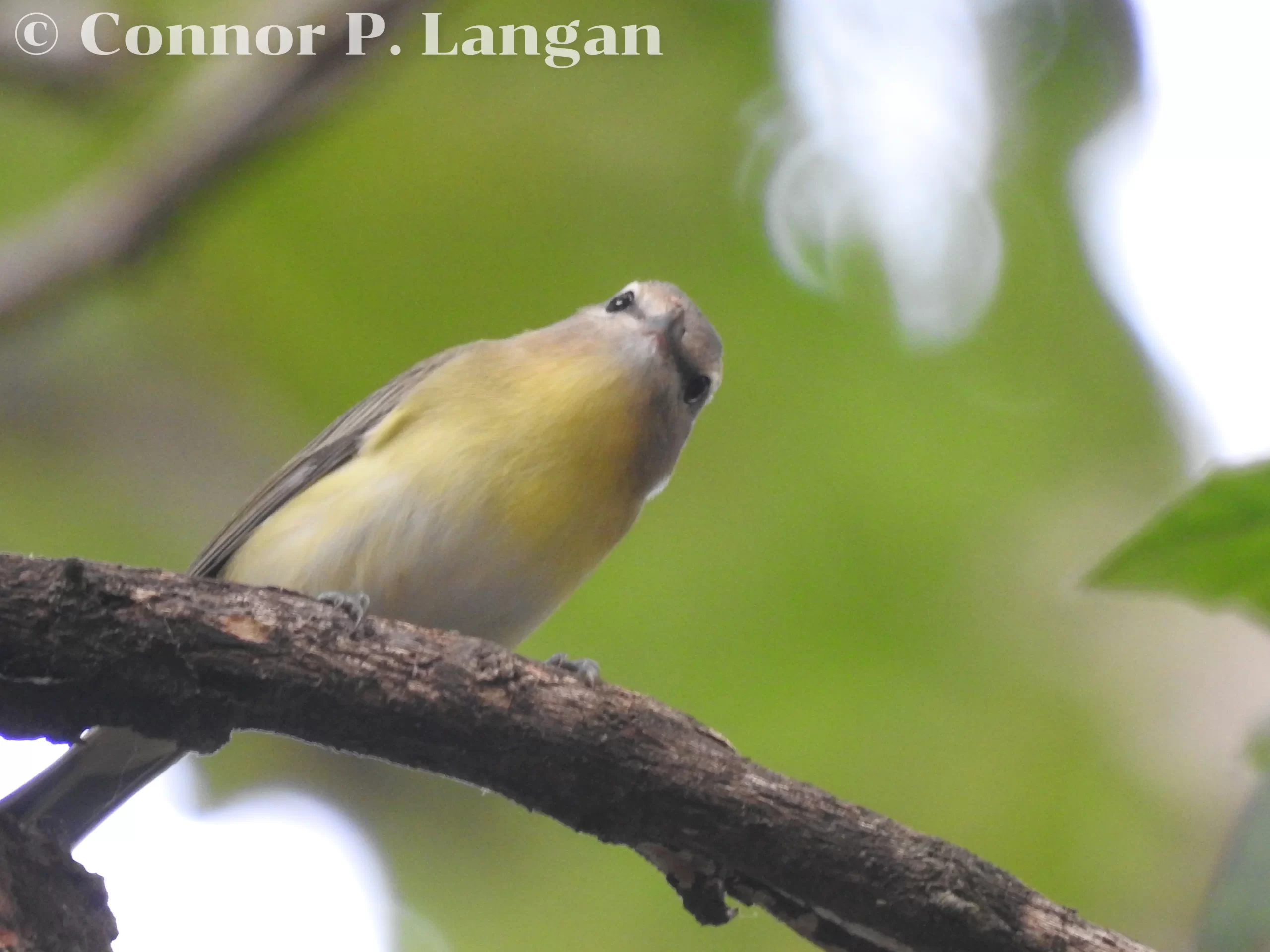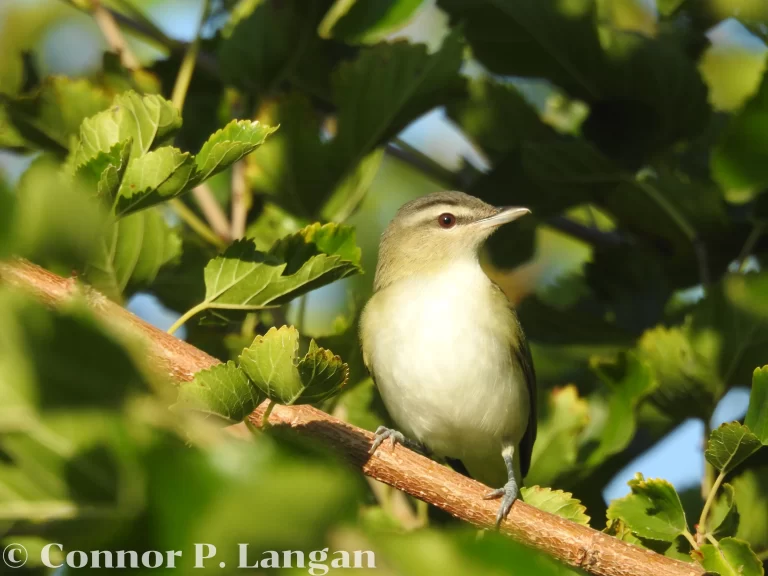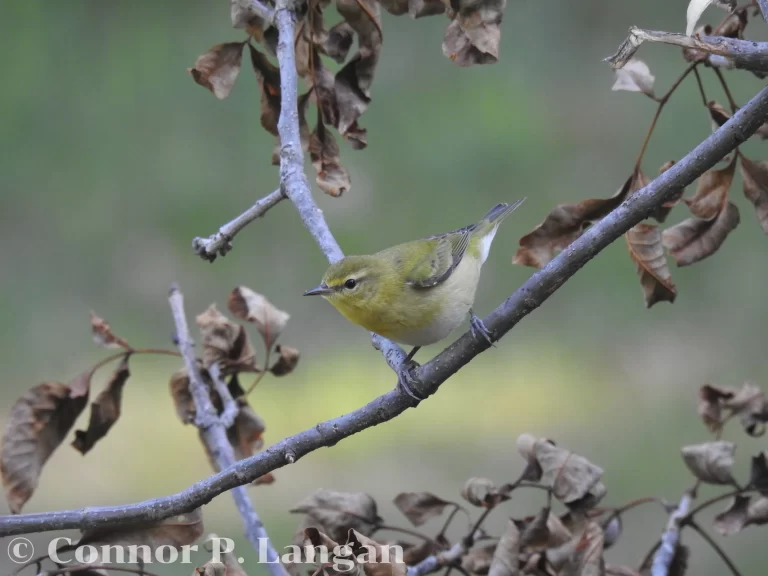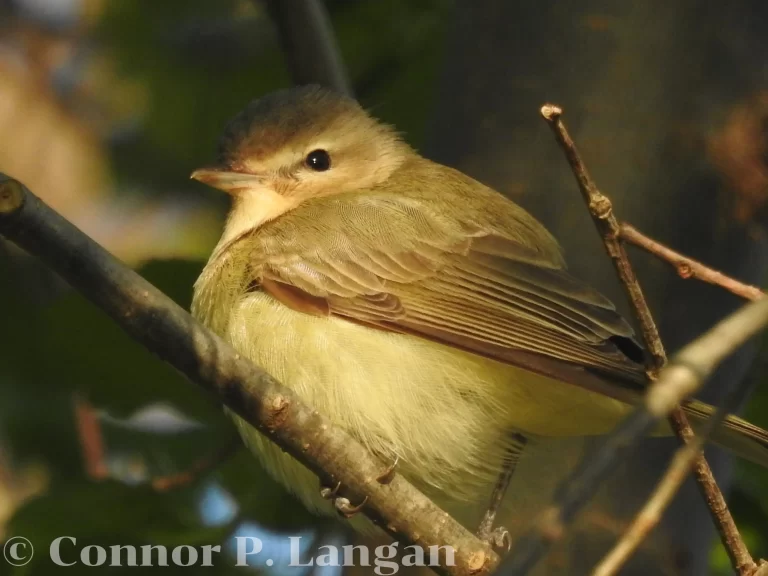Description
The Philadelphia Vireo has very similar proportions to a Warbling Vireo. Philadelphia Vireos have short tails and thick bills that appear small compared to the large heads of these birds.
These rotund songbirds measure 4.25 inches to just shy of 5 inches long. Philadelphia Vireos weigh around 0.5 ounces on average.
Male and female Philadelphia Vireos cannot be distinguished based on appearance. All Philadelphia Vireos have a gray crown with a pale supercilium, brownish-gray backs, and unmarked wings.
The undersides of a Philadelphia Vireo will vary depending on the time of year and by individual bird. Some birds have a pale cream-colored underside with yellow throats, while other birds are entirely yellow below. Birds tend to have more yellow coloration in fall compared to spring.
Behavior
Philadelphia Vireos establish territories that are as large as 10 acres. A pair will establish a territory and defend it from intruding birds such as other vireos, cowbirds, and jays.
Philadelphia Vireos remain within their family units during the breeding season. These birds may associate with other songbirds during migration. It can be difficult to locate a foraging Philadelphia Vireo since these birds often remain in the upper levels of trees.
Diet
Philadelphia Vireos eat a strict diet of insects during the breeding season. In the nonbreeding season, these birds incorporate a substantial amount of berries into their diets. Philadelphia Vireos forage higher in treetops than most other vireo species.
Habitat
These songbirds occupy an assortment of habitats throughout the year. Deciduous or mixed woodlands may be used during the summer breeding season, while coniferous forests tend to be avoided.
Philadelphia Vireos commonly seek out breeding territories adjacent to streams, but this is not a prerequisite for nesting. It seems that these birds prefer to breed in areas that feature young trees and a healthy understory.
Look for Philadelphia Vireos in similar habitats to the ones in which they breed during spring and fall migration. In the winter, these vireos can be found in habitats such as mangrove forests, forest edges, and various plantations.
Range
Most of the Philadelphia Vireo breeding population is located in Canada, though some birds breed in the Northeastern United States and the northern portions of states like Minnesota and North Dakota. These birds spend the winters in Mexico and throughout Central America.
Breeding
Philadelphia Vireos are monogamous by nature. They may return in subsequent years to the location in which they were born, but they tend to select new mates annually.
The female chooses the location for her nest. Nests are situated close to the tops of small trees, with these structures being more than 60 feet up in some instances.
Females perform most of the nest construction by themselves, but the males will typically guard them during the nest-building process. A cup-shaped nest is made from grasses, tree bark, lichens, and other plant fibers.
Females usually produce a single brood of eggs each year. Each clutch contains as many as 4 eggs and the young hatch in less than two weeks. Nestlings remain in the nest longer than most other vireo species, leaving about 15 days after hatching.
Backyard Birding
Seeing a Philadelphia Vireo in your yard would be special, as these birds do not use bird feeders or birdhouses. If you’ve got a decent amount of timber in your yard, you may be able to entice a migrating Philadelphia Vireo to stop by.
Population Status
Philadelphia Vireos have increased substantially in the past half-century thanks to effective forest management in North America. There are around 4 million Philadelphia Vireos at this time, but these birds are still threatened by the loss of wintering ground habitats.




